A Palestinian celebratory meal is never complete without a pot of this delicious lemony flavorful warak dawali.
Warak dawali also known as grape leaves. Making this dish requires stuffing the leaves with a flavorful mixture of spiced ground beef or lamb and rice then rolled and cooked.
A vegan version of this dish, popular for yalanji, is often served as an appetizer or a side dish.

For other stuffed vegetable recipes try my cabbage rolls, stuffed zucchini, stuffed eggplants (mahshi batjinjan) and vegan stuffed swiss chard. And if you're looking for ones without rice make sure to check my simple and delicious grape leaves meat patties recipe (kiftah bi warak) and sheikh el mahshi.
Jump to:
What is Warak Dawali?
Warak Dawali or grape leaves are the leaves of the grapevine plant, either obtained fresh or preserved in a jar. The leaves are commonly rolled and stuffed with a rice mixture and spiced ground beef or lamb, this recipe is often served as the main course.
Warak Dawali, also called warak enab or Greek dolmas, is a popular Middle Eastern dish. The name "Warak Dawali" is often used in Arabic-speaking regions. Warak comes from the word waraka, English for a piece of paper, in this case, it means a leaf. And dawali means vines, enab is the Arabic word for grapes.
Palestinians proudly plant vine leaves in their garden where they not only enjoy picking the fresh grape leaves but also enjoy sitting under them during the hot summer months.
Commonly, grape vines start producing leaves in late spring or early summer, where the leaves are soft and tender and perfect for this dish. Stacks of leaves are picked during the season and Palestinian women would stack and store them to use for rolling/cooking throughout the year.
I grew up with grapevines in our backyard, my dad planted them so we could pick fresh leaves during the season. So, my mother like most Palestinian women would hand-pick fresh warak to use for this dish.
Jarred grape leaves are an alternative to fresh leaves which are usually hard to find in the US.
Equipment
This post may contain affiliate links.
Pot or Dutch Oven - cooking pot to cook warak, for this recipe a medium-size pot of about 5-quart.
Large Mixing Bowl - For mixing the rice mixture
Ingredients

White Rice - It's best to use short grain with his recipe, Cal-rose or Egyptian rice works well
Ground Meat - I’m using ground lamb with this recipe, but you can use ground beef or a mixture of beef and lamb.
Jar of grape leaves - can be found at any of the Middle Eastern grocery stores
Sea Salt
Spices - Allspice and Nutmeg
Olive Oil - I like to use extra virgin olive oil
Lemon - Fresh lemon juice
Pomegranate seeds are just for decorations
Instructions
Full ingredients, measurements, and instructions are in the recipe card at the bottom of this post.
Prepare Stuffing
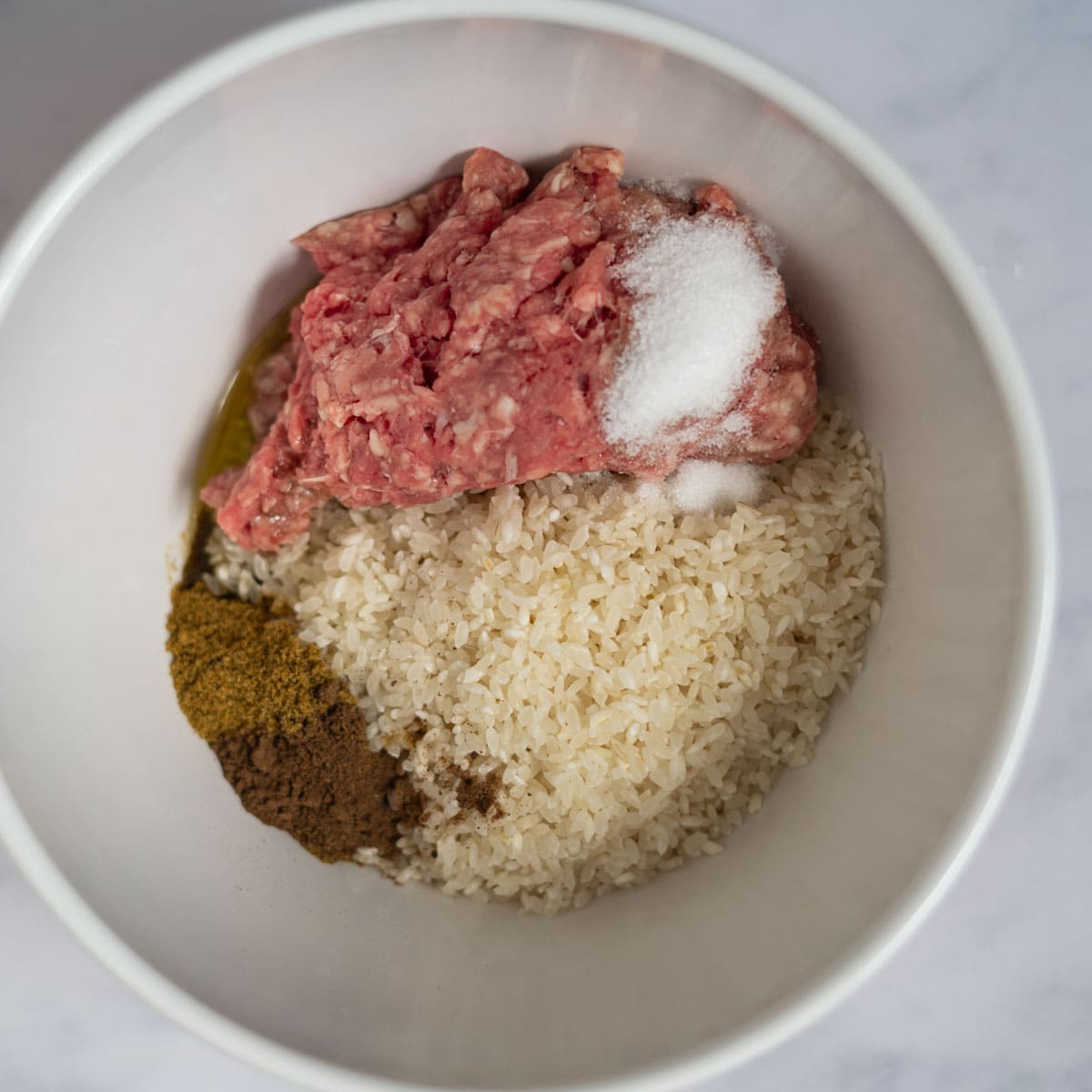
Step 1 | In a bowl, add washed and rinsed rice, meat (minced or ground), spices, salt, and olive oil.
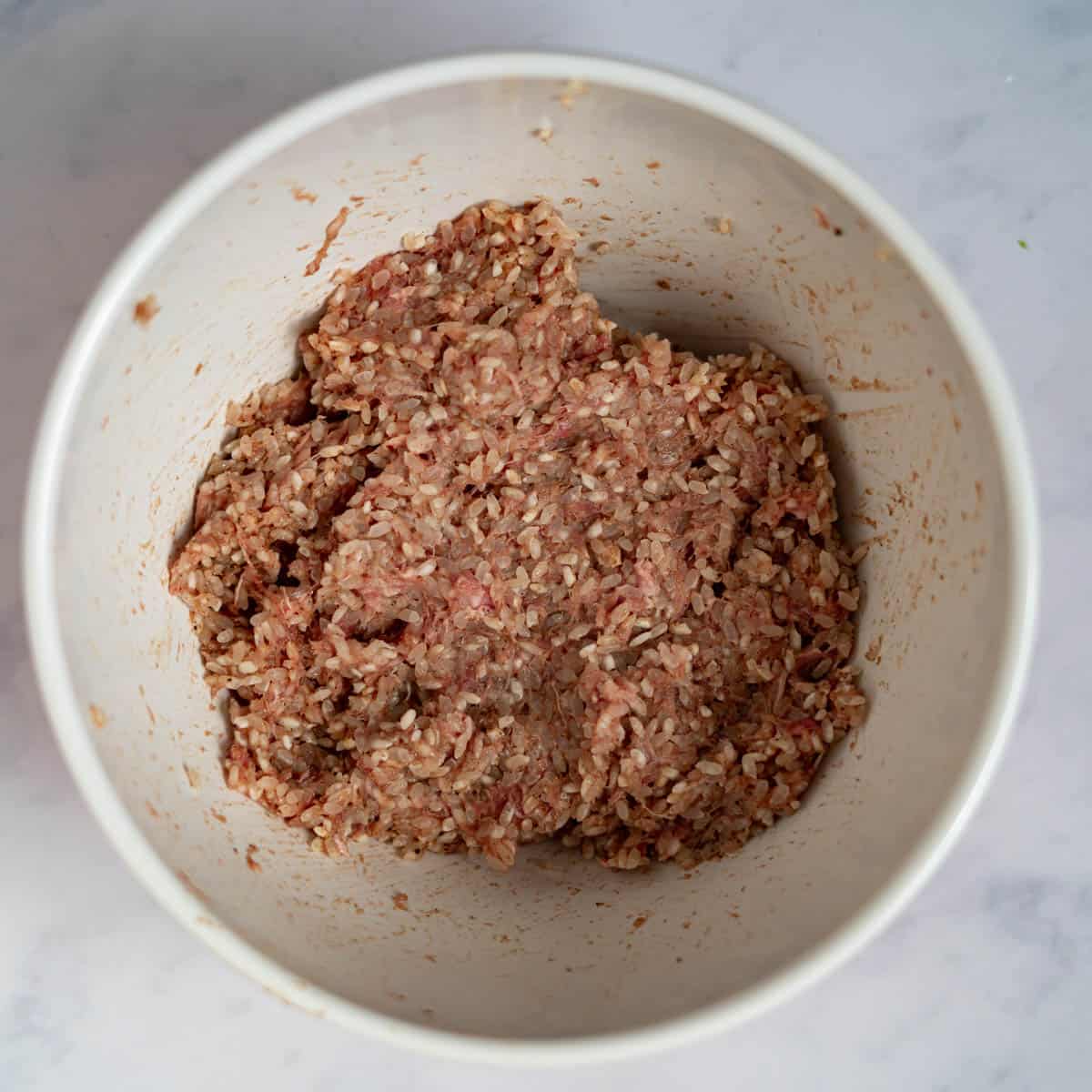
Step 2 | Mix all together until well combined.

Step 3 | Take grape vines out of the jar, soak them in hot water for 10-15 minutes, remove water, and wash them a couple of times with cold water to get rid of any residue.
Rolling Warak Dawali (grape vine leaves)

Place a grape leaf on a flat surface, vein side up, and place a spoonful of the filling in the center of the leaf.

Fold one side of the leaf over the filling.

Fold the other side of the leaf over the filling.
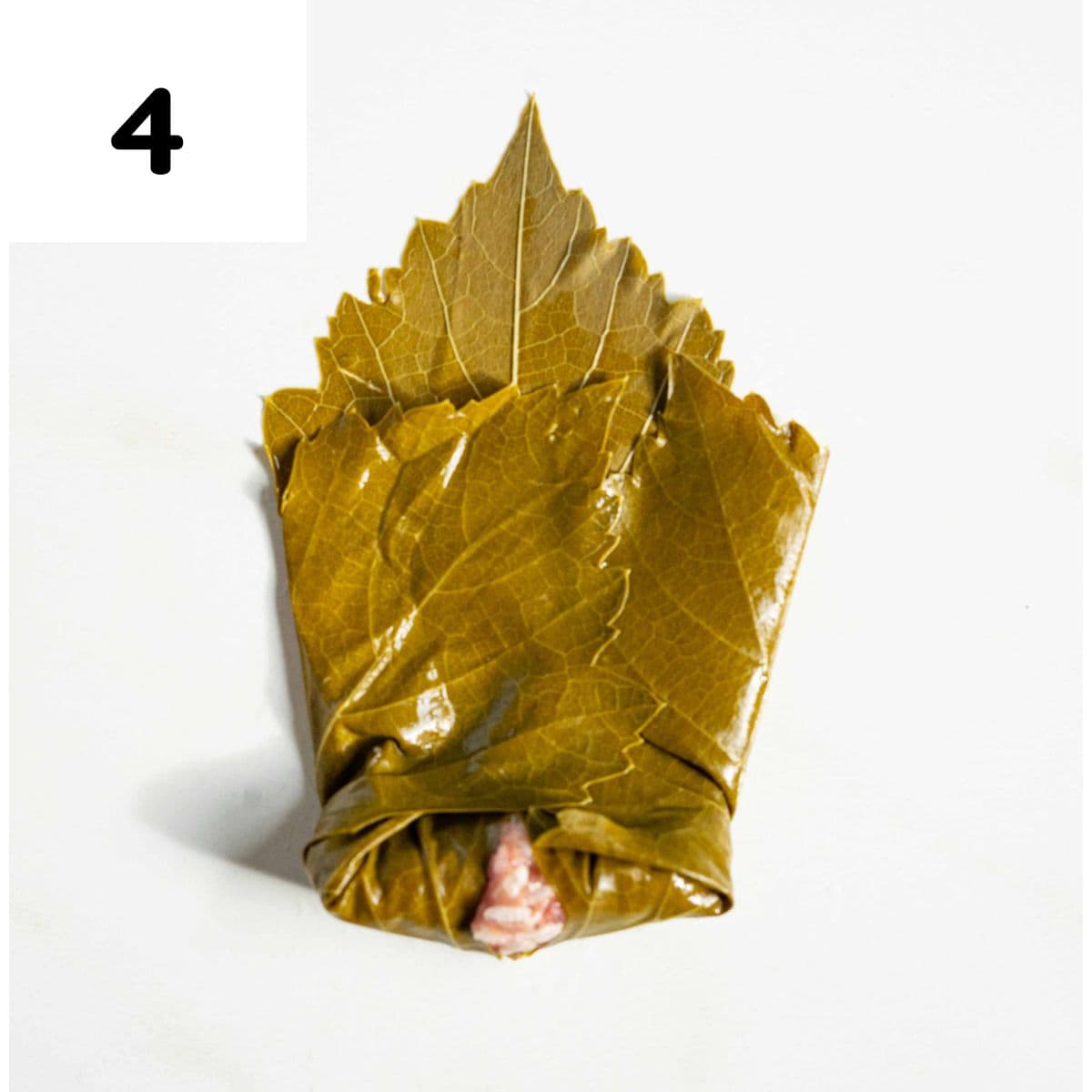
Then fold the bottom sides.

Then roll it tightly from the bottom to the top.
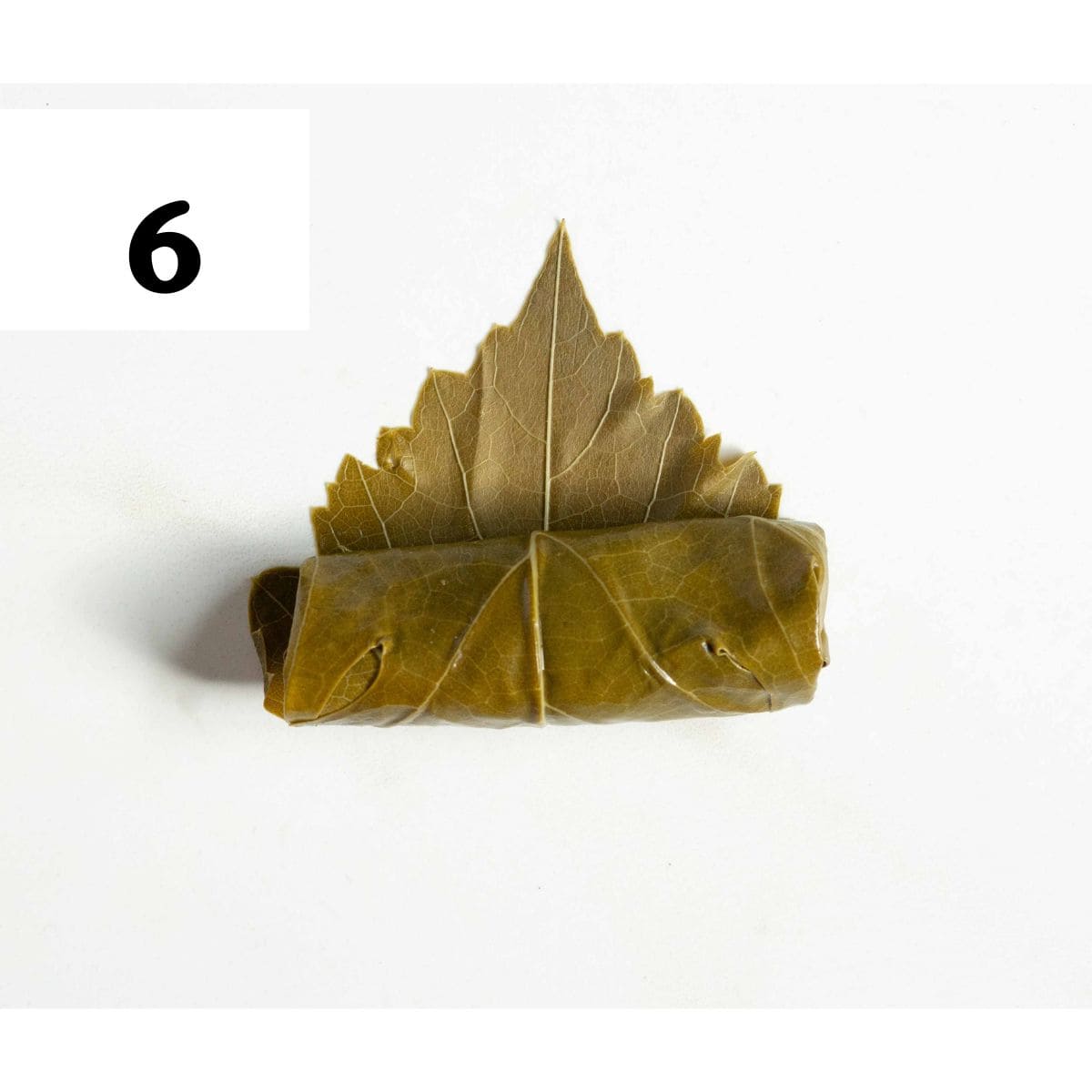
Roll it tightly from the bottom to the top, forming a compact roll.

Repeat the process until all leaves are rolled.
Cooking

Step 1 | Arrange the stuffed grape leaves in layers, seam side down, in the pot.
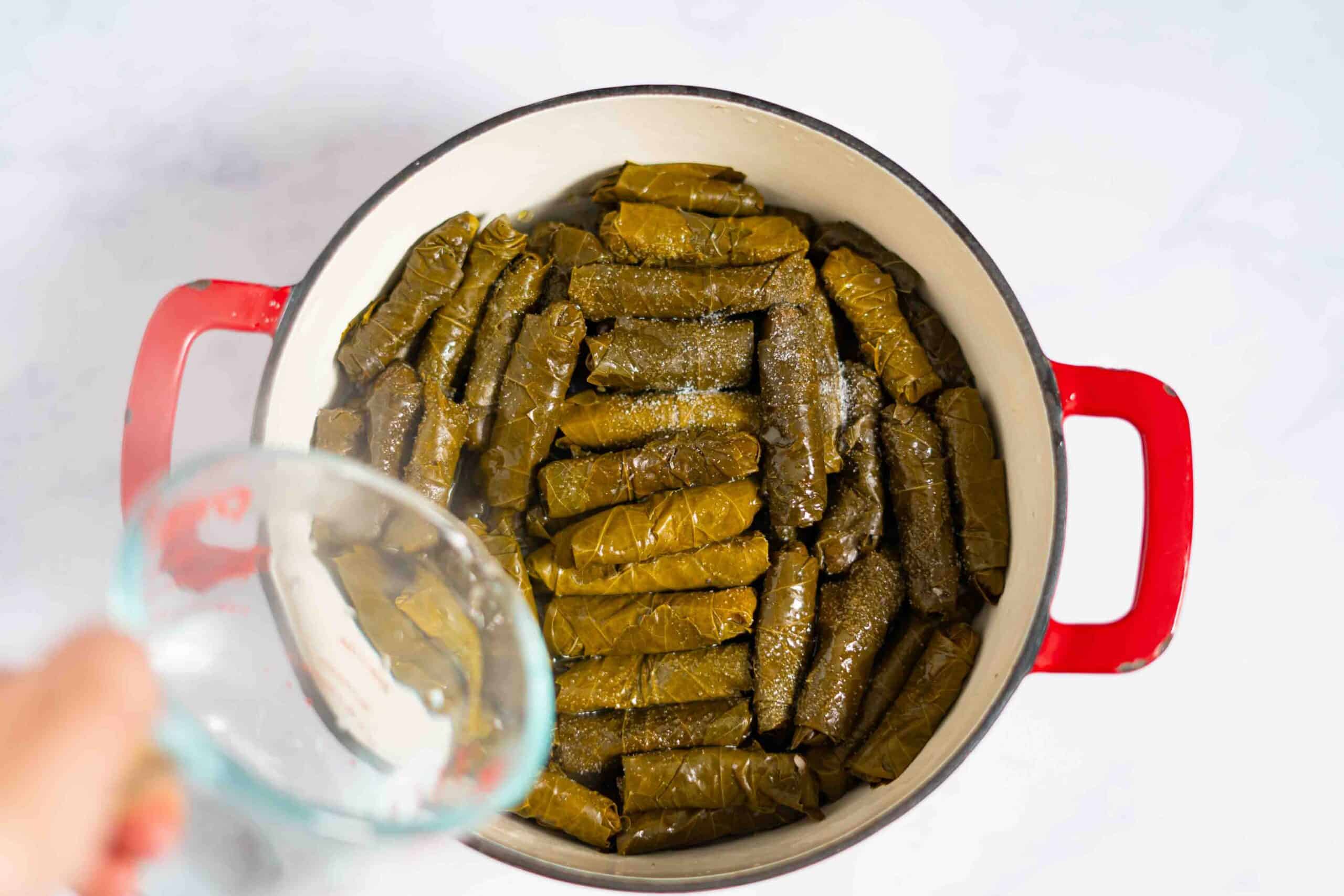
Step 2 | Sprinkle some salt, pour the remaining olive oil, then add boiled water. Bring the pot to a boil, then cover the pot and reduce the heat to low. Let it simmer, covered, for about 45-60 minutes or until the rice is cooked and the grape leaves are tender. Add lemon juice halfway through cooking.
How to Serve Warak Dawali?
Once warak dawali is cooked, set aside for a few minutes to cool off. Then remove the pot lid and cover it with a round serving tray or platter, hold the platter and the pot handles from each side then flip the entire pot. You can get rid of the extra cooking liquid before flipping the pot if any. If you don't feel comfortable filliping the pot you can pick some from the top of the pot into a plate.
Warak dawali is served hot or at room temperature. It is served next to plain yogurt, cucumber yogurt salad, or any other basic salad.
Substitution and Variations
- Any remaining grape leaves or damaged ones can be placed at the bottom of the pot.
- For extra flavor, you can add sliced tomatoes at the bottom of the pot under the leaves and the top over the leaves.
- Traditionally this recipe and all mahshi recipes are used with minced meat instead of ground, feel free to use minced if accessible.
- Using lamb chops in the pot is common with this recipe. Sprinkle some salt, allspice, and nutmeg over the lamb chops and place them in the pot of the pot before starting layering grape leaves.
- You can use chicken broth or tomato sauce while cooking instead of water.
Pro Tips
- Some jarred leaves come with the stems attached, make sure to remove the stem end from the leaves with a knife before rolling the leaves.
- Don’t overfill the leaves, remember that the stuffing includes uncooked rice which will expand once cooked.
- The leaves are usually stacked in the jar and sometimes it’s challenging to pull them out gently without tearing them, so I recommend taking them out before emptying the water.
- If using fresh grape leaves, blanch them in boiling water for a few minutes to soften them.
- Since rolling warak dawali can be time-consuming, the process can be done a day before and kept in the fridge to be cooked the next day.
- If you end up with leftovers of the rice stuffing you can use it to stuff other available vegetables in your fridge, most common and available is tomato, use a corer to core the tomato and fill it with the rice mixture and add in the pot with the grabe leaves.
- It's important to soak the leaves and wash them well, leaves are stored in brine, so they would be very salty.
Storage and Reheating
- Cooked warak dawali can be refrigerated in an airtight container for up to 3-4 days.
- You can freeze cooked warak dawali for up to 3 months stored in an airtight container.
- You can freeze uncooked warak dawali for up to 3 months, but make sure the meat is fresh and hasn’t been previously frozen.
FAQ
Yes, you can use bulgur or freekeh instead of rice.
Adding fresh lemon juice at the beginning might slow down cooking the leaves, for best results, it's better to add it halfway through cooking.
Grape leaves are tender and have a light citrusy, green, and tangy taste.

Click here to subscribe to my newsletter and receive free and new recipes right into your inbox!
If you made warak dawali or any other recipe I would love it if you could give me a 5-star rating and leave a comment below.
I also would like to hear about your experience making it, snap a picture and tag me on Instagram, Facebook, or Pinterest.
More Delicious Recipes

Warak Dawali
- Prep Time: 60 minutes
- Cook Time: 60 minutes
- Total Time: 2 hours
- Yield: 3-4 1x
- Category: Main course
- Method: Stove
- Cuisine: Palestinian - Middle Eastern
- Diet: Halal
Description
A Palestinian celebratory meal is never complete without a pot of this delicious lemony flavorful warak dawali.
Warak dawali also known as grape leaves. To cook this dish the leaves are filled with a flavorful mixture of spiced ground beef or lamb and rice then rolled and cooked.
Ingredients
- 2 cups Egyptian or cal-rose rice, washed and rinsed
- 1 jar grape leaves 16oz
- 1 pound ground or minced lamb or beef (or a mixture of both)
- 1 teaspoon allspice
- 1 teaspoon salt (and an extra ¼ of teaspoon to add while cooking)
- ¼ cup of neutral or olive oil
- ¼ cup of fresh lemon juice (as needed)
Instructions
Prepare Stuffing
- In a bowl, add washed and rinsed rice, meat (minced or ground), spices, salt, and olive oil.
- Mix all together until well combined.
- Take grape vines out of the jar, soak them in hot water for 10-15 minutes, remove water, and wash them a couple of times with cold water to get rid of any residue.
Rolling Warak Dawali (grape vine leaves)
- Place a grape leaf on a flat surface, vein side up, and place a spoonful of the filling in the center of the leaf.
- Fold one side of the leaf over the filling.
- Fold the other side of the leaf over the filling.
- Then fold the bottom sides.
- Then roll it tightly from the bottom to the top.
- Roll it tightly from the bottom to the top, forming a compact roll.
- Repeat the process until all leaves are rolled.
Cooking
- Arrange the stuffed grape leaves in layers, seam side down, in the pot.
- Sprinkle some salt, pour the remaining olive oil.
- Cover with boiled water (fill about ¾ of the pot).
- Bring the pot to a boil, then reduce the heat to low.
- Cover the pot and let it simmer for about 45-60 minutes or until the rice is cooked and the grape leaves are tender.
- Add lemon juice halfway through cooking.
Notes
- Some jarred leaves come with the stems attached, make sure to remove the stem end from the leaves with a knife before rolling the leaves.
- Don’t overfill the leaves, remember that the stuffing includes uncooked rice which will expand once cooked.
- The leaves are usually stacked in the jar and sometimes it’s challenging to pull them out gently without tearing them, so I recommend taking them out before emptying the water.
- If using fresh grape leaves, blanch them in boiling water for a few minutes to soften them.
- Since rolling warak dawali can be time-consuming, the process can be done a day before and kept in the fridge to be cooked the next day.
- If you end up with leftovers of the rice stuffing you can use it to stuff other available vegetables in your fridge, most common and available is tomato, use a corer to core the tomato and fill it with the rice mixture and add in the pot with the grabe leaves.
- It's important to soak the leaves and wash them well, leaves are stored in brine, so they would be very salty.

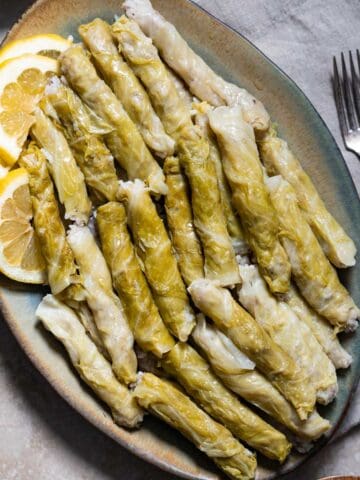
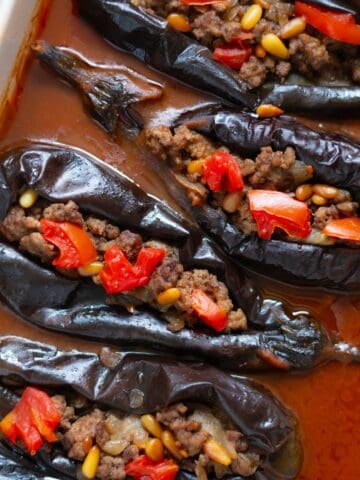

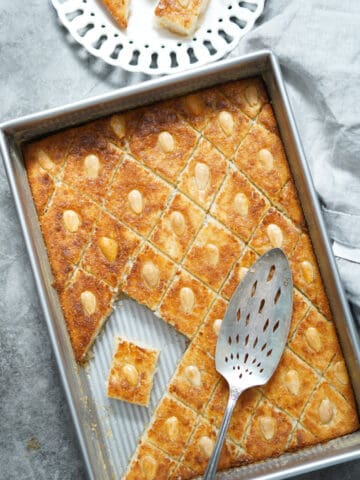
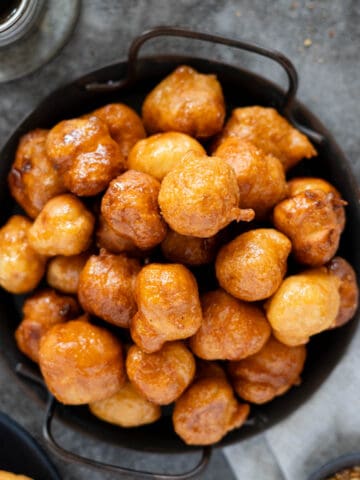
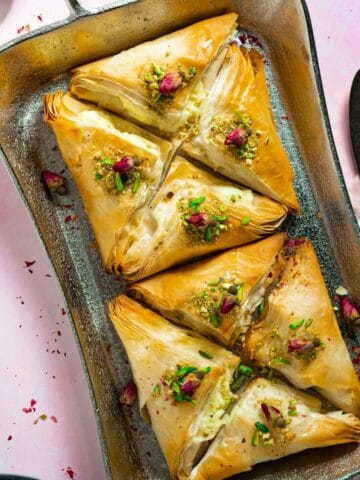

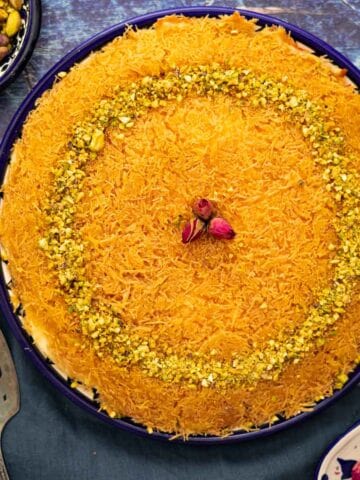
Dina says
One of my most favorite dishes, I love the step by step instructions.
Wafa Shami says
Great to hear. Thank you.